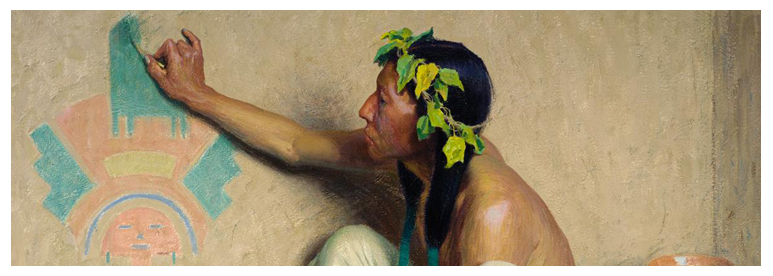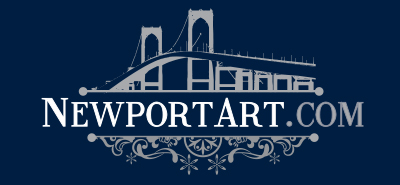
Eanger Irving Couse was an American artist and a founding member and first president of the Taos Society of Artists. He is noted for paintings of Native Americans, New Mexico, and the American Southwest. His house and studio in Taos have been preserved as the Eanger Irving Couse House and Studio—Joseph Henry Sharp Studios, which is listed on the National Register of Historic Places and the New Mexico Register of Cultural Properties.
After his return to the United States, Couse first lived in New York. He spent time in Taos, New Mexico during the summers. At the turn of the 19th century, the Southwest, and New Mexico in particular, attracted numerous artists and writers because it remained untouched by national expansion efforts dictated by the American policy of Manifest Destiny. The artists and writers of this era wanted to capture the last vestiges of the Old West before it disappeared altogether. During his time in New Mexico, Couse studied and painted the lives and culture of the Taos Indians, a Pueblo tribe. He began to show his paintings of Native American life and earned his first solo show in 1891.
In 1911 Couse was elected to the National Academy of Design. He also became active in the Taos art colony. In 1915, Couse was one of the six founding members of the Taos Society of Artists, and was elected first president. Another founding member was the artist J. H. Sharp, who adapted a chapel near Couse’s house as a studio. Later Sharp built a combined house and studio on the land. The adjacent properties are recognized jointly as the Couse/Sharp Historic Site, and are preserved and operated by the Couse Foundation.
Among Couse’s works in public galleries are Elk-Foot of the Taos Tribe (Smithsonian American Art Museum); Taos Pueblo – Moonlight (New Mexico Museum of Art); The Forest Camp (Brooklyn Museum of Art); The Pottery Maker (Two Red Roses Foundation);The Tom-Tom Maker (Lotos Club, New York); Medicine Fires (Montclair Gallery, New Jersey); and Shapanagons, a Chippewa Chief (Detroit Museum of Art).
Of these works, Elk-Foot of the Taos Tribe, painted in the summer of 1909, is considered Couse’s masterwork. The painting was purchased for the United States national art collection by the well-known art collector William T. Evans and is now displayed in the collections of the Smithsonian American Art Museum. Elk-foot, whose anglicized name was Jerry Mirabal, began posing for Couse in 1907 and was one of the painters favorite subjects because of his “physical beauty and ideal features.”
Couse’s The Captive was shown in 1891 at his first solo exhibition, held at the Portland Art Association in Oregon, and then at the Paris Salon of 1892. This large, “salon size” painting was the first Native American subject by Couse, who later achieved fame in the United States for his paintings of the indigenous peoples of New Mexico. In 1991, The Captive was included in the National Museum of American Art exhibition entitled The West as America, which created controversy by its curatorial interpretation of the artists’ meanings and intents. Art historians have explored the painting’s racial, sexual, and social motives in the context of American society at the time.
In 1899, Couse exhibited three paintings at the Boston Art Club: A Cayuse Indian (oil), Maternity (oil), and Yakima Encampment (oil). At the time, Course listed his current address as the Van Dyck Studios, 939 8th Avenue, New York City.
